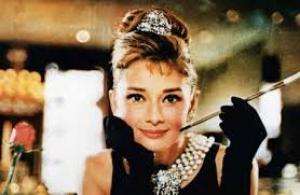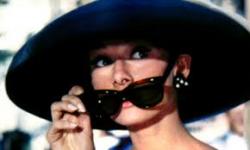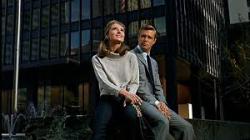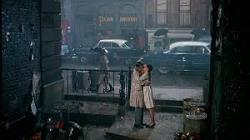Proto-Pretty Woman
By Michael Roberts
“It’s better to look at the sky than live there” - Truman Capote
Blake Edwards was handed the conundrum that was Breakfast at Tiffany's in 1961, i.e. how do you make a mainstream film of Truman Capote's novella that incorporates the idea of a homosexual writer who befriends a pretty, bi-sexual New York faux call girl who is seeking escape from a hillbilly teen marriage that occasioned an abortion at age 14 and a drug addiction to marijuana!? Short answer is… you don’t. George Axelrod was given the job to adapt the book and changed some of the raunchier key plot points, with John Frankenheimer as the mooted director, but when Holly was cast with the waif-like Audrey Hepburn she objected to the relatively unknown director and approved Blake Edwards instead. Edwards was barely starting in the directing stakes himself, having had a career as a screenwriter of note in the 1950’s, but he’d enjoyed a great success with his comedy Operation Petticoat, which may have given a clue as to the direction he would take with Capote’s gritty story.
Capote himself pushed Paramount to cast his friend Marilyn Monroe in the lead, as he intuited her underlying nervousness and fragility (if not her body shape) would have been perfect for Holly, but Paramount chose their own contract player, the sleek and stylish Audrey Hepburn and gave her one of her iconic roles in the process. Axelrod, who would go on to write the marvellous The Manchurian Candidate for the dismissed Frankenheimer a year later, said of the story, "Nothing really happened in the book...(what) we had to do was devise a story, get a central romantic relationship, and make the hero a red-blooded heterosexual." Axlerod neatly understood the difference between Capote’s ability to write character rather than narrative, but in 1961 ‘art’ films from major studios were atypical to say the least, so Holly’s tawdry little tale got the full Hollywood treatment.
Edwards opens with the now iconic sequence of Holly Golightly (Audrey Hepburn) pulling up in a New York cab on the corner of 5th Ave and West 57th in Manhattan, where gets out and eats ‘breakfast’ while gazing through the windows of the up-market jewellery store Tiffany and Co. Holly meets her new neighbour Paul, a writer of no visible means of support until his socialite benefactor shows up (Patricia Neal) and it becomes clear that he is her ‘toy boy’. Paul’s glimpse into Holly’s particular slice of the American Dream reawakens his urge to write and he claws his way back to self-sufficiency as he watches Holly attempt to carve out a future that doesn’t entirely disgust her. Paul and Holly drop their guard when in each other’s company and vaguely hope that a shared future is possible, regardless of Holly’s madcap dreams of marrying the 9th richest man in America.
The adaptation speaks to the times as much as to the Hollywood system of the day and the changes made from the novel were influenced by several factors. Axelrod conformed to the mores of the day, concocting a standard romantic scenario that completely changed the tone of the piece. Capote had made Holly a composite of several society women he knew and also wrote in a back story reminiscent of his own mother’s life. She was Lillie May Faulk, a southern woman who married a salesman in Louisiana and had 4 kids, including Truman, but subsequently divorced him and moved to New York and a Park Ave address with her wealthy second husband Joseph Capote. Truman’s writer, who is never named in the novel and has no benefactor, was a homosexual who had no romantic interest in Holly and in the novel she abandons the cat, leaves for Brazil and he never hears from her again. The film appeared a decade before it might otherwise have been made incorporating those elements, as a downbeat ending amongst offbeat fringe dwellers was de riguer for American Renaissance era films in the 1970’s.
Capote spoke about the struggle to make the film faithful to the book, and of his disappointment in the final result, “I had lots of offers for that book, from practically everybody,' he said, 'and I sold it to this group at Paramount because they promised things, they made a list of everything, and they didn't keep a single one…. It was the most miscast film I've ever seen,' he said. 'Holly Golightly was real-a tough character, not an Audrey Hepburn type at all. The film became a mawkish valentine to New York City and Holly, and, as a result, was thin and pretty, whereas it should have been rich and ugly. It bore as much resemblance to my work as the Rockettes do to Ulanova.” The film however should be viewed as a separate beast, its superficial sheen covering an ugly heart, despite the dissonant note sounded by the happy ending.
Axelrod managed to convey something of the quiet and desperate terror that lurks behind the heavily made up faces of the Holly’s of the world. Axelrod had written The Seven Year Itch as his entrée into the A-list world of writers and something of Billy Wilder’s cynical eye had rubbed off, and Breakfast At Tiffany’s especially needs to be viewed in light of Wilder’s 1960 masterpiece The Apartment, his clear eyed indictment of middle-class sexual values. With Breakfast At Tiffany's, Paramount effectively tried to make The Apartment meets How To Marry a Millionaire, a frothy ‘50s, glossed-out comedy full of glamour and escapism. Audrey Hepburn’s luminous presence, and the upbeat ending, seemingly obscured the dirty heart of the piece, just as Julia Roberts would do in the egregious Pretty Woman 30 years later. Holly was a beautiful and empty cipher, not ready to drop the mask of the New York, carefree fun-ster, until real connection with Paul challenges her to finally confront her own empty life and lack of self-awareness and identity.
Paul starts to write again and his book begins, “There was once a very lonely, very frightened girl. She lived alone except for a nameless cat.” Eventually Paul has to confront his own behaviour, as he is effectively just as kept as Holly is, a gigolo to match her ‘call girl’ in most respects, until both take off their masks (literally) and reach out to the real person underneath. Holly reveals her un-made up, unglamourous self when she’s on her fire escape playing her guitar, a simple country girl at last. For this revealing moment of quietude Edwards reached out to a man who would become synonymous with his films, Henry Mancini and he wrote the signature tune to Johnny Mercer’s immortal lyric, Moon River. Here at last is the real Holly? the non-phony as opposed to the "real phony", an appellation that would surely have had Holden Caulfield's head spinning.
Truman said of the central character, “Holly Golightly was not precisely a call girl. She had no job, but accompanied expense-account men to the best restaurants and night clubs, with the understanding that her escort was obligated to give her some sort of gift, perhaps jewellery or a check ... if she felt like it, she might take her escort home for the night. So these girls are the authentic American geishas, and they're much more prevalent now than in 1943 or 1944, which was Holly's era”
Breakfast At Tiffany’s is seen by most people as the pinnacle of Hollywood glamour and romance, it is not. It has a superficial gloss and some jarring moments of tone that belong in that kind of film and Micky Rooney’s clanging Japanese stereotype belongs in the comedies of the silent era, but it is a fascinating near-hit for what it is. In a post Sex And The City world, where Carrie and her ilk wear Holly inspired designer gear and Charlotte approximates Holly’s ethos to a nicety, it is salient to look back at Holly and wonder at where her spiritual grand-daughters sprang from.
Audrey Hepburn never looked more beautiful and George Peppard’s oddly po-faced hunk evokes a nice level of fakery, a beautiful façade hiding something desperate and grabbing. Holly is offered a different kind of cage by Paul, but she’s in no shape to differentiate the golden cage she aspires to from the ordinary bars he’s offering. If ever a film cried out for a re-make with a modern aesthetic it’s this one, regardless of iconic nature of several of its elements. Breakfast At Tiffany’s is a gorgeous looking time capsule that could have been so much more.




